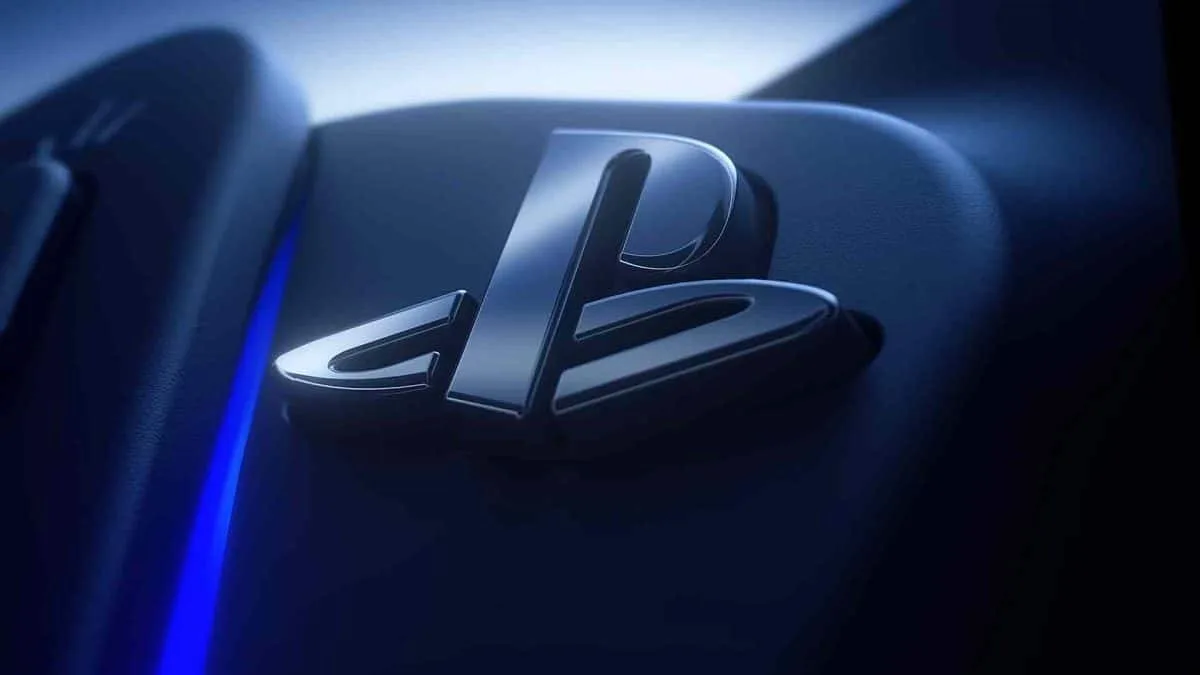The Rise of Sony PlayStation: A Complete History, Impact & Legacy
- Introduction to the Rise of Sony PlayStation
- The Origins of PlayStation: A Failed Partnership That Sparked Success
- Launch of the First PlayStation (1994–2000)
- PlayStation 2: The Console That Changed Everything
- PlayStation 3: Challenges and Comeback
- PlayStation 4: Gaming for the Masses
- PlayStation 5: The Future of Gaming Today
- Cultural Impact of PlayStation
- Business Strategy Behind Sony’s Gaming Success
- Competitors vs. PlayStation: A Console War Story
- The Future of PlayStation and Gaming Industry Trends
- Frequently Asked Questions
- Conclusion: The Legacy of PlayStation
Introduction to the Rise of Sony PlayStation
The story of the Sony PlayStation is not just about a video game console—it’s about a revolution that reshaped entertainment, technology, and culture worldwide. From its humble beginnings in the early 1990s to its present dominance in the global gaming market, PlayStation has consistently pushed boundaries. Its rise reflects a blend of bold innovation, strategic decisions, and a deep understanding of gamers’ desires.
For beginners and general readers, understanding this journey is like tracing the evolution of modern gaming itself. PlayStation’s legacy is not only about selling millions of consoles but also about transforming how we think of gaming as an art form, a social experience, and a cultural phenomenon.
The Origins of PlayStation: A Failed Partnership That Sparked Success
Sony and Nintendo’s Abandoned Collaboration
The PlayStation’s rise began unexpectedly in the early 1990s with a failed partnership. Originally, Sony collaborated with Nintendo to create a CD-ROM add-on for the Super Nintendo Entertainment System (SNES). This project, known as the “Nintendo Play Station,” was meant to merge Nintendo’s stronghold in gaming with Sony’s expertise in electronics.
However, disagreements over licensing rights and control caused Nintendo to abruptly abandon the deal in 1991. While most companies might have walked away, Sony saw an opportunity. This broken partnership fueled Sony’s decision to enter the gaming industry independently.
The Vision of Ken Kutaragi
At the heart of this bold move was Ken Kutaragi, often called the “Father of PlayStation.” Kutaragi, a Sony engineer, had long believed in gaming’s potential. Despite skepticism within Sony, he championed the idea of creating a standalone gaming console. His persistence paid off when Sony officially greenlit the PlayStation project.
This turning point was the seed that grew into a global gaming empire.
Launch of the First PlayStation (1994–2000)
Breaking into the Gaming Industry
In December 1994, Sony launched the first PlayStation (PS1) in Japan. A year later, it arrived in North America and Europe, instantly changing the gaming landscape. Unlike established giants Nintendo and Sega, Sony was a newcomer, but the PS1 introduced fresh energy into the market.
Revolutionary Features of the PS1
What made the PlayStation stand out? Several factors:
-
CD-ROM Format – Allowed for larger, more detailed games compared to cartridges.
-
3D Graphics – Introduced immersive, polygon-based visuals.
-
Strong Third-Party Support – Attracted developers with easier programming tools.
These innovations positioned PlayStation as the modern gaming machine of its time.
Iconic Games That Defined an Era
The PS1 wasn’t just about technology; it was about unforgettable experiences. Titles like Final Fantasy VII, Metal Gear Solid, Gran Turismo, and Resident Evil became cultural milestones. These games pushed storytelling, visuals, and gameplay to new heights, making the PlayStation a must-have console for millions.
By 2000, the PlayStation had sold over 100 million units, cementing its place in history.
PlayStation 2: The Console That Changed Everything
Record-Breaking Sales and Popularity
In March 2000, Sony launched the PlayStation 2 (PS2) in Japan, and later in North America and Europe. The console was met with unprecedented excitement, with long queues of fans eager to get their hands on it. What followed was nothing short of extraordinary—the PS2 became the best-selling console of all time, moving over 155 million units worldwide.
This dominance was not just about timing. The PS2 represented a leap in gaming, multimedia, and accessibility, making it the centerpiece of home entertainment in the early 2000s.
The Role of DVDs and Multimedia Features
One of the PS2’s biggest selling points was its DVD playback feature. At the time, standalone DVD players were expensive. For many households, buying a PS2 was like buying a cutting-edge DVD player that also played games. This smart decision dramatically boosted sales and made the PS2 a household essential, not just a gamer’s toy.
Additionally, the PS2 was backward compatible with PS1 games, meaning players didn’t have to give up their favorite titles when upgrading.
Legendary Game Titles on the PS2
The success of the PS2 wasn’t only about hardware—it was about the games. Some of the most iconic and genre-defining titles emerged on this platform, including:
-
Grand Theft Auto: San Andreas
-
Shadow of the Colossus
-
Final Fantasy X
-
God of War
-
Metal Gear Solid 3: Snake Eater
These masterpieces elevated gaming into cinematic experiences, blending story, music, and graphics in ways that rivaled movies.
By the end of its lifecycle, the PS2 was not just a console—it was a cultural phenomenon that redefined gaming for a generation.
PlayStation 3: Challenges and Comeback
The High Price Controversy
The PlayStation 3 (PS3) launched in 2006, and for the first time, Sony faced serious challenges. The console debuted at a steep price of $599 in the U.S., which alienated many consumers. This gave competitors like Microsoft’s Xbox 360 and Nintendo’s Wii a head start.
Critics mocked Sony’s pricing strategy, and sales initially lagged behind expectations. However, Sony refused to back down.
Technological Advancements with Blu-ray
Despite the rough start, the PS3 introduced cutting-edge features. It included a Blu-ray drive, which not only enhanced game storage capacity but also made the PS3 one of the cheapest Blu-ray players available at the time. This decision would later prove crucial, as Blu-ray beat HD-DVD in the format war, securing Sony another technological victory.
Online Gaming and the PSN Revolution
Another milestone of the PS3 era was the creation of the PlayStation Network (PSN). For the first time, Sony embraced online gaming on a global scale. With PSN, players could download games, connect with friends, and access multimedia services.
Though plagued by a major security breach in 2011, PSN eventually became the backbone of Sony’s digital ecosystem. By the end of the PS3’s life cycle, Sony had managed a comeback, selling over 87 million units worldwide and rebuilding its reputation.
PlayStation 4: Gaming for the Masses
Affordable Pricing and Accessibility
Sony learned valuable lessons from the PS3 and applied them to the PlayStation 4 (PS4), launched in 2013. From the start, Sony priced the PS4 at $399, making it more affordable than Microsoft’s Xbox One. This competitive pricing, combined with a gamer-first philosophy, gave Sony a massive advantage.
Rise of Indie Games on PS4
Another defining aspect of the PS4 was its support for independent game developers. Sony opened its platform to smaller studios, resulting in a surge of creative and experimental titles like Journey, Inside, and Hollow Knight. This move broadened the gaming experience beyond big-budget blockbusters.
Blockbuster Exclusives That Defined the Console
Of course, Sony didn’t abandon its tradition of delivering world-class exclusives. The PS4 became home to some of the most celebrated games of the modern era:
-
The Last of Us Part II
-
Horizon Zero Dawn
-
Bloodborne
-
Uncharted 4: A Thief’s End
-
Marvel’s Spider-Man
These titles not only sold millions of copies but also raised the bar for storytelling, graphics, and immersion.
By 2020, the PS4 had sold over 116 million units, making it one of the best-selling consoles ever.
PlayStation 5: The Future of Gaming Today
Next-Gen Hardware and Performance
The PlayStation 5 (PS5) launched in late 2020 during the global pandemic. Despite production shortages, it quickly became one of the fastest-selling consoles in history. The PS5 introduced ultra-fast SSD storage, ray-tracing graphics, and haptic feedback controllers, delivering a next-level gaming experience.
The Rise of Digital-Only Consoles
For the first time, Sony released a digital-only version of the PS5, reflecting the growing trend of downloadable games. This model was more affordable, and it highlighted a shift toward a future less dependent on physical discs.
PS5 Game Library and Expanding Ecosystem
The PS5’s lineup already includes hits like Demon’s Souls Remake, Ratchet & Clank: Rift Apart, and Horizon Forbidden West. With ongoing support for PlayStation Plus subscriptions and cloud gaming, Sony is building an ecosystem that extends beyond just hardware.
The PS5 is not only about gaming—it’s about creating a connected entertainment hub for the digital age.
Cultural Impact of PlayStation
Changing the Way We Play
The rise of PlayStation wasn’t just about gaming consoles—it was about changing lifestyles. Before Sony’s entry, video games were often seen as a hobby for kids. PlayStation helped break that stereotype by offering cinematic experiences that appealed to teenagers, young adults, and even older audiences.
Games like Final Fantasy VII and Metal Gear Solid made storytelling central to the gaming experience. Suddenly, games were no longer “child’s play”—they were immersive narratives with emotional depth.
PlayStation’s Role in Pop Culture
Over the decades, PlayStation has woven itself into global culture. From appearing in music videos and movies to inspiring internet memes and esports events, the brand transcended gaming. The PlayStation logo, startup sound, and iconic controller symbols (△ ○ × □) are recognized worldwide.
Even fashion and music embraced PlayStation—brands like Nike, Adidas, and Uniqlo have released limited-edition collaborations, while artists often reference PlayStation in their lyrics. It’s more than a console; it’s a cultural icon.
Business Strategy Behind Sony’s Gaming Success
Focus on Exclusive Titles
Sony’s strategy has always centered on exclusive games that can’t be played anywhere else. Franchises like God of War, The Last of Us, Gran Turismo, and Spider-Man have become system-sellers, ensuring that PlayStation maintains a loyal fanbase.
This focus on exclusives differentiates Sony from Microsoft’s Xbox, which emphasizes services and subscriptions.
Innovation in Controllers and Hardware
From the DualShock to the DualSense, Sony has consistently innovated with its controllers. The PS5’s haptic feedback and adaptive triggers provide tactile immersion that rivals can’t easily replicate. Similarly, Sony’s venture into PlayStation VR shows its willingness to explore new frontiers in gaming.
Expansion into Online Services and VR
Sony has embraced the digital shift with PlayStation Plus, offering free monthly games, online multiplayer, and cloud storage. In 2022, Sony revamped its subscription service to compete with Xbox Game Pass, bundling classic titles and streaming options.
The company also continues to invest in virtual reality through PlayStation VR2, betting on immersive technology as a cornerstone of future entertainment.
Competitors vs. PlayStation: A Console War Story
Nintendo vs. PlayStation
Nintendo and Sony were once partners but quickly became fierce rivals. While Nintendo has traditionally targeted family-friendly experiences with franchises like Mario and Zelda, PlayStation leaned toward mature storytelling and realism.
Interestingly, both brands thrived by focusing on different audiences rather than fighting head-to-head.
Xbox vs. PlayStation Rivalry
The fiercest competition has been with Microsoft’s Xbox. Since the launch of the original Xbox in 2001, the two giants have battled for dominance.
-
Xbox pioneered online gaming with Xbox Live, but Sony caught up with PSN.
-
Xbox Game Pass introduced a “Netflix for games,” prompting Sony to expand its own subscription model.
-
While Xbox often wins in raw power or services, PlayStation consistently dominates in global sales thanks to its exclusives and worldwide recognition.
The console wars remain one of the most fascinating rivalries in tech history, driving innovation on both sides.
The Future of PlayStation and Gaming Industry Trends
Cloud Gaming and Streaming Services
The future of gaming may not depend on physical consoles. Services like PlayStation Now and the revamped PlayStation Plus already allow gamers to stream titles directly, reducing reliance on hardware. Cloud gaming could make PlayStation accessible on TVs, PCs, and even smartphones, reaching billions of potential players.
Virtual Reality and the Metaverse
Sony is heavily investing in VR and immersive technology. With the launch of PlayStation VR2, the company aims to expand the boundaries of interactive entertainment. Combined with the growing buzz around the metaverse, PlayStation may play a leading role in shaping digital worlds.
PlayStation’s Path Forward
Sony’s future strategy seems clear: focus on exclusive titles, next-gen hardware, and digital ecosystems. With studios like Naughty Dog, Santa Monica Studio, and Insomniac Games under its wing, PlayStation’s storytelling dominance looks set to continue.
As gaming evolves, PlayStation will remain at the forefront—balancing nostalgia, innovation, and cultural influence.
Frequently Asked Questions
Conclusion: The Legacy of PlayStation
The rise of Sony PlayStation is more than just a business success story—it’s a tale of vision, resilience, and innovation. From a failed partnership with Nintendo to becoming the global leader in gaming, PlayStation has shaped how millions of people experience entertainment.
Each generation—from the groundbreaking PS1 to the futuristic PS5—has redefined what’s possible in gaming. More than a console, PlayStation is a cultural force that continues to influence technology, art, and society.
As we look to the future, one thing is certain: the legacy of PlayStation will endure, inspiring generations of gamers and pushing the boundaries of what interactive entertainment can be.




Discussion (0)